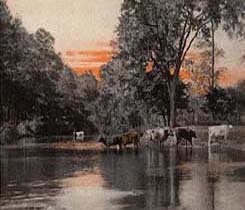
- Capital City:
- St. Paul
- Nickname:
- North Star State / Gopher State / Bread and Butter State
- Motto:
- L'Etoile du Nord (The star of the north.)
- Statehood:
- May 11, 1858 (32th)
- Origin of State's Name:
- Based on the Dakota Sioux Indian word for "sky-tinted water," referring to the Minnesota River or the state's many lakes.
- Largest Cities:
- Minneapolis, Saint Paul, Bloomington, Duluth, Rochester
- Border States:
- Iowa, North Dakota, South Dakota, Wisconsin
- Land Area:
- 79,617 sq. mi., 14th largest
- State Bird:
- Common Loon
- State Flower:
- Pink and white lady's-slipper (cypripedium reginae)
- State Tree:
- Red Pine (pinus resinosa)
- State Song:
- Hail! Minnesota
The "Land of 10,000 Lakes," Minnesota got its nickname because there are more than 12,000 lakes throughout the state. Its name comes from the Dakota (Sioux) word for the Minnesota River's "sky-tinted waters." The Minnesota Territory was formed in 1849 from what had been part of the Northwest Territory, and Minnesota joined the Union in 1858. The state flower is the pink and white lady's slipper, and the capital is St. Paul.
Minnesota State Fair
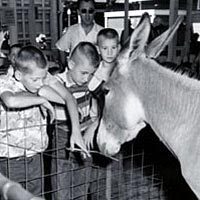
One of the nation's largest and best-attended agricultural and educational entertainments, the fair attracts over 1.6 million people annually from Minnesota, the U.S., and Canada. Free entertainment on six stages, along with ten nights of nationally known entertainers, make it the event of the summer in Minnesota. Originally attended primarily by farmers and their families, the fair still showcases the finest agriculture and livestock in the state. Hands-on educational exhibits for non-farmers have been added to the standard livestock displays. The 12-day exposition has been held since 1885 on 340 acres of fairgrounds located between the downtown areas of St. Paul and Minneapolis. (The first state fair was in 1859, but the site was rotated each year.) The project includes historical text, 11 photographs, brochures, a poster, and copies of six annual reports for the fair, including an 1880 and an 1899 report.
Spam Festival
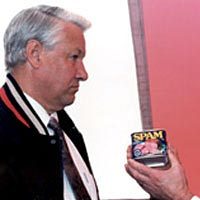
Austin is the home of the Hormel Company's plant that produces SPAM, a canned meat product well known to Americans. SPAM has been a lifeline to Americans during difficult times and helped to celebrate the best of times. Created in 1937, SPAM is celebrated as part of the SPAM JAM, a Fourth of July celebration in Austin, for about 50 years. In the late 1930s, SPAM luncheon meat commercials were aired on the "Burns and Allen Show" featuring George Burns and Gracie Allen, Artie Shaw and his orchestra and SPAMMY, a miniature pig and the group's mascot. In 1991, Hormel Foods established the First Century Museum on the occasion of its 100th anniversary; the exhibit of SPAM memorabilia quickly became and remains the most popular. To enter the museum, visitors walk through a giant replica of a SPAM luncheon meat can.
The popularity of SPAM continues. In the United States alone, 3.6 cans of SPAM are consumed every second, making it the unrivaled number one product in its category. Outside the United States, the largest consumers are South Korea and Great Britain, and, on the island of Guam, over eight cans of SPAM are consumed by every person each year.
St. Paul's Labor Day Picnic
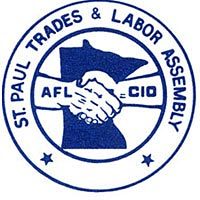
The first St. Paul Labor Day picnic was held at Liep's Pavilion, a popular entertainment site on the shores of White Bear Lake, just east of St. Paul. Trains from St. Paul, Minneapolis and Stillwater brought thousands of unionists to the celebration on the first Monday in September 1885. The picnic was organized by the Knights of Labor, a national labor organization that predated the American Federation of Labor (AFL). Founded in 1869 by nine Philadelphia tailors, the Knights grew into a powerful nationwide organization of all workers, regardless of craft, race, or gender. Its goals included abolition of child labor; support of the eight-hour workday, equal pay for equal work, wage equality for women and African-Americans; and the establishment of Labor Day, as a national holiday.
The first Labor Day event was celebrated in the United States in 1882 in New York City. The following year, Minnesota established Labor Day as a state holiday, and in 1894, the Congress passed legislation creating Labor Day as a federal holiday.
In the 1890s the Knights of Labor was succeeded by the AFL. Later the Labor Day celebration and parade were organized by the St. Paul Trades & Labor Assembly, which promoted union-made products, as well as union-endorsed political candidates, at various Labor Day celebrations. By the early 1950s, the Labor Day celebration had fizzled, then was reborn in 1987 under the leadership of the late Steve Dress, a teacher and business representative for the assembly. As one of St. Paul's oldest community events, the Labor Day picnic and festivities continue to celebrate the goals espoused by the organizer of the city's first Labor Day event, J.P. McGaughey, who urged all working people to "swell the great army of peace and production....You are one of the spokes in this great wheel of progress and your absence will weaken the wheel by one member."
Laura Ingalls Wilder Pageant
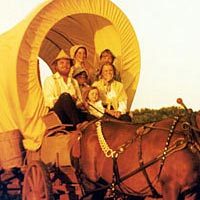
Presented every July in Walnut Grove, the Wilder Pageant is a family-oriented outdoor drama with all Laura Ingalls Wilder's Little House on the Prairie book characters. An actress playing a 70-year-old Laura narrates the story, reflecting on her life in Walnut Grove during the 1870s.
The stage at the hillside amphitheater where the drama is presented was designed to facilitate extensive lighting, sound, special effects, and imaginative sets. Laura Ingalls Wilder, famous author of the children's Little House series of books, was born in Wisconsin, and moved with her family to Walnut Creek. Her family was one of the pioneer families who settled Walnut Grove, following the Homestead Act of 1862.
The Walnut Grove pageant developed as a result of the popular 1970s TV series, Little House on the Prairie, set in Walnut Creek (although DeSmet, South Dakota, was the book's setting) . When tourists started coming to Walnut Creek, the community decided to create something relevant for them to see. A museum was developed in an old train depot, and filled with Laura Ingalls Wilder memorabilia. About this same time, a local college student, Jim Merchant, approached the museum committee about a play he was writing about the Ingalls life in Walnut Creek. The museum decided to sponsor his play, Fragments of a Dream, which first played in 1978 to standing room only crowds in the sweltering summer heat in the auditorium at Walnut Grove High School. The following year, the pageant moved to its permanent home on the banks of Plum Creek. The production is a year-round job for the Wilder Pageant committee, made up of local volunteers.
 Print
Print Email
Email







